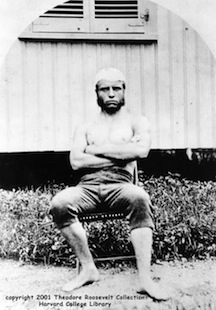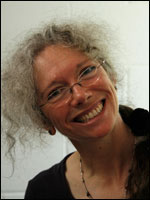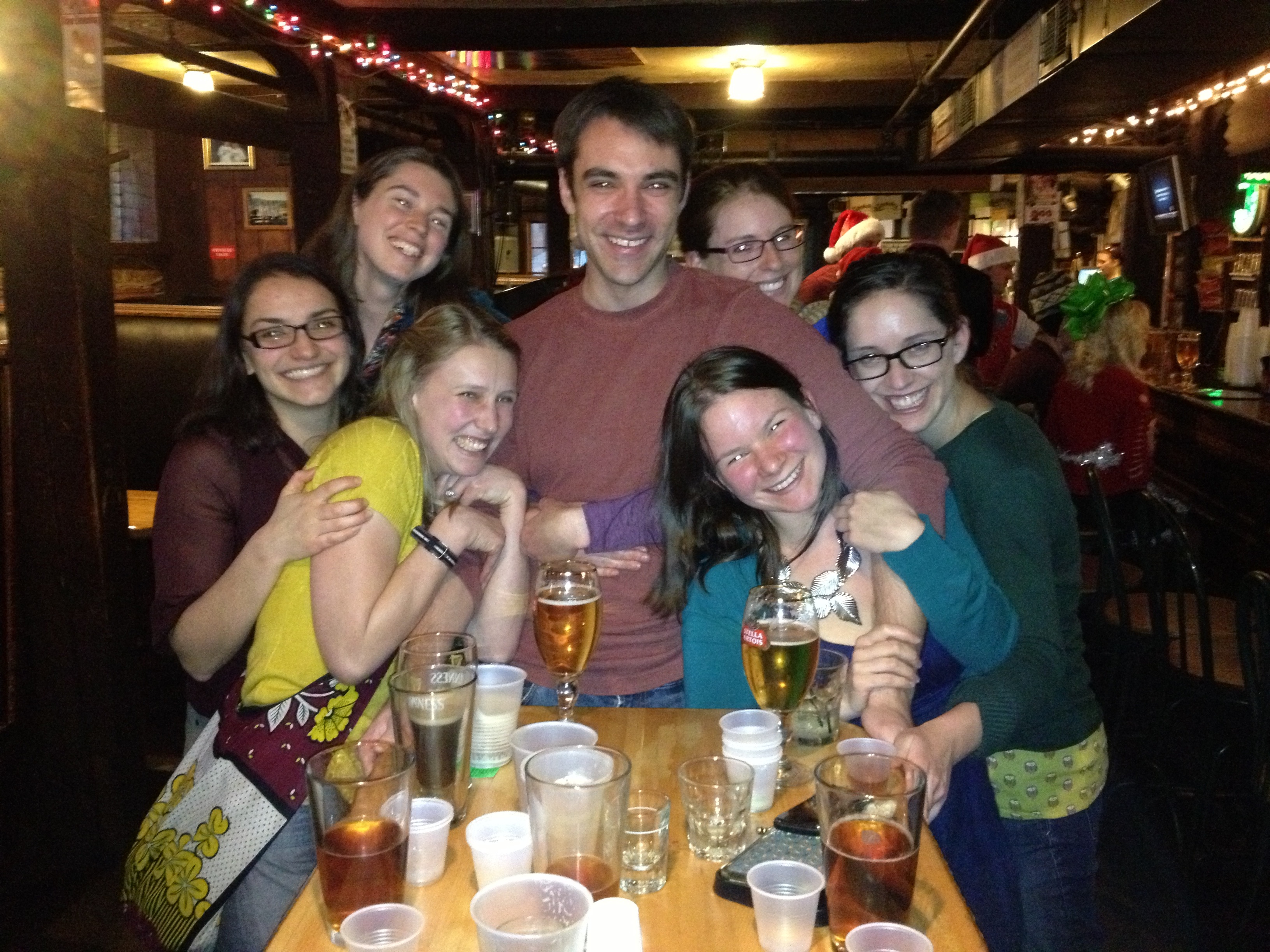Time for a little American history lesson. Appropriate indeed as we have a great number of bashing (appropriate British adjective for awesome?) brits, a head kiwi, a couple of Robert Burns loving Scots, a quirky Canadian and a couple of recently departed team members of the “Oranje”.
Check this guy out.

I’ve wanted to write about Theodore Roosevelt for a while now, but was hesitant thinking I wouldn’t be able to appropriately convey how awesome he was. Too much time has elapsed, however, so I’ll just throw caution to the wind and I’ll do my best to impart a slight flavor of this giant persona and hit on a few themes that may be particularly intriguing for young scientists. For a more extensive history and an absolutely brilliant account of his life, see The Rise of Theodore Roosevelt, by Edmund Morris, the first of a series of three books to chronicle his life, which is currently on loan to Katey, with the possibility of a future transfer to Laura.
Some of you in the group have probably heard me babbling from time to time about Theodore Roosevelt, quite possibly the most interesting and admirable of the United States Presidents. Widely quoted by politicians, respected by conservationists and third from the left in this picture:

I first became enamored with Theodore Roosevelt not after hearing about him in early history classes, or even after reading Edmund Morris’ biography, but rather after stumbling upon an original work of his entitled Through the Brazilian Wilderness, which is his first hand account of an expedition he undertook following the conclusion of his presidency, along with some biologists of the American Museum of Natural History of New York and the Brazilian government, to collect specimens and map previously uncharted geographical features in an area of the Amazon.
I had an idea of Theodore’s affinity for nature, mostly from the simple fact that he was a dominant force in the establishment of the country’s first national parks, but I was staggered upon reading his accounts of the biodiversity he encountered in the Brazilian jungle. His attention to detail and the enthusiasm behind his introductory descriptions of the poisonous snakes handled by Doctor Vital Brazil left me incredulous that these were the thoughts and observations of a politician and not a scientist.
As a result of this work, I developed a deeper understanding of Roosevelt as a naturalist and an explorer. His blaring personality and virility leave the reader rolling their eyes at times, but my overall impression was highly favorable. Nestled within the abrasive masculinity (which I actually found quite endearing), and the over-done patriotism, was the footprint of an agile thinker, an ecologist and an adventurer: qualities that I never got exposed to during history classes that featured his mention.
In Edmund Morris’ first book I read about his early sickly years as a young child with asthma and his subsequent dedication to exercise that eventually cured him of his malady, his early interest in nature, especially birds, a change in his trajectory that converted him from pure naturalist to politician, a complete obsession with reading (nearly a book a night), and an ability to write books and articles on a variety of subjects in the form of historical analyses, biographies, naturalist observations, political statements and first hand accounts.
This got me wondering? How does a single person keep such a variety of interests? I recall Andrew saying that the average tasks/concepts one can keep track of at a time is limited at 5, but Roosevelt seems to far surpass this. The most impressive aspect is that he was seen as a colleague in many fields, not only showing interest in a variety of subjects, but also actively producing work in each field.
Now I’ll have to issue some self-restraint or I could fall victim to listing all the qualities and deeds of Roosevelt that left me in awe, and this might resemble a love letter or give the impression I’m forming a cult of personality around the man…
Apologies. Clearly my admiration for the man is high. But how can you not get wrapped up in a character who is a mosaic of swashbuckling pirate, quiet naturalist, dedicated athlete, and also happens to be a politician? A man who gained respect during his time as New York City’s Police Commissioner by enforcing a previously lax law forbidding the sale of alcohol on Sunday. Yes, people praised the man for forbidding the sale of alcohol. By forcing a complete enforcement of the law on all levels of society, he exposed the injustice of a law that was previously only limiting sale of alcohol to non-elite members of society. He in a sense showed the vestigial nature of a law by focusing attention of the entire body (in this case, residents of New York) on it.
So what can a young scientist like myself learn from such a man?
1.) It’s absolutely possible to have multiple interests. Success will ultimately stem from this. Roosevelt was often approached by experts in diverse fields, even before his rise to presidency. He effectively acted as a keystone, or as a critical node if you will, in the formation of many policies, by providing a bridge among experts that had him as a commonality.
2.) It’s not sufficient to have interests, but active participation in the field and contributions.
3.) Read and write as often as physically possible.
4.) You can’t be afraid to make enemies.
And most importantly and most indicative of how Roosevelt lived his life:
5.) Success comes from action. Roosevelt wasn’t just a bundle of ideas, but rather showed a complete execution of his thoughts. I find this last statement something I should particularly pay attention to. Nothing ultimately comes from a head full of ideas or a wide-eyed interest in a variety of subjects. Active participation and production is ultimately important.
Oh yeah. And on a swim in Cuba, upon being surrounded by a group of sharks, his reaction, unlike those of frantically waving onlookers on shore or his terror-stricken swimming companion, was one of confidence and an assurance that they would not attack, backed up by multiple readings of his on shark behavior. Roosevelt the marine biologist.
 Welwitschia mirabilis is not like other plants. Instead of growing an indefinite number of leaves that each have a characteristic size and shape, it produces only two leaves over its considerable lifespan (1500 years?!). These two leaves grow out like hair for the lifetime of the plant, showing truly impressive split ends. I think of modularity as a major point in favor of the plant lifestyle–if leaves get damaged by insect herbivores or careless mammals, just drop those and grow new ones. Why would a plant benefit from giving up modular growth? And yet these plants continue to grow in the desert, in no imminent danger of extinction.
Welwitschia mirabilis is not like other plants. Instead of growing an indefinite number of leaves that each have a characteristic size and shape, it produces only two leaves over its considerable lifespan (1500 years?!). These two leaves grow out like hair for the lifetime of the plant, showing truly impressive split ends. I think of modularity as a major point in favor of the plant lifestyle–if leaves get damaged by insect herbivores or careless mammals, just drop those and grow new ones. Why would a plant benefit from giving up modular growth? And yet these plants continue to grow in the desert, in no imminent danger of extinction.
 Today,
Today, 





